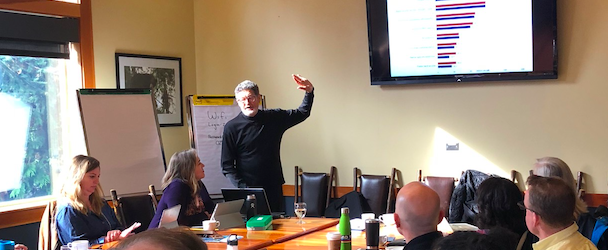Think twice before you say, "That's not my job."
Here at IMPACTS, we work to understand perceptions, behaviors, and motivations surrounding cultural organizations, and we make that information accessible on this site and during workshops. The real-world data frequently challenges leaders to think differently about reaching new audiences and satisfying current visitors in more productive ways. Because we have research on potential visitors “on the outside” of our organizations, the data conversation is often approached from an external point of view. Leaders ask what they can do to better engage these folks! ...But bringing in new visitors also...Never miss the latest read on industry data and analysis.
Already have an account? Sign In


